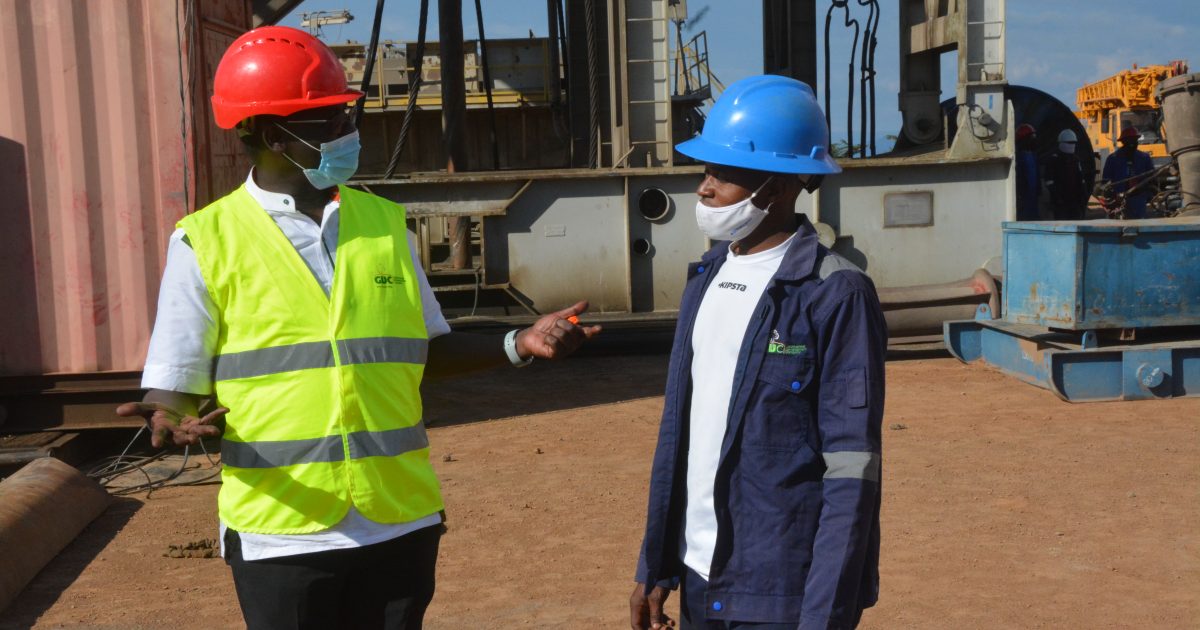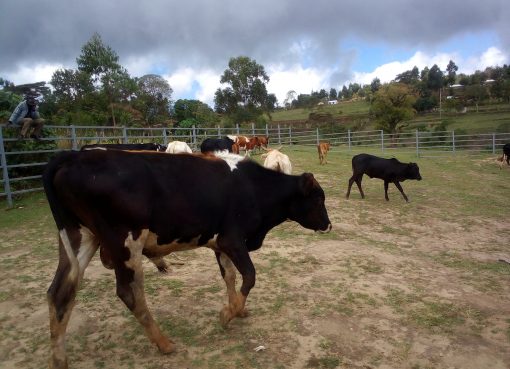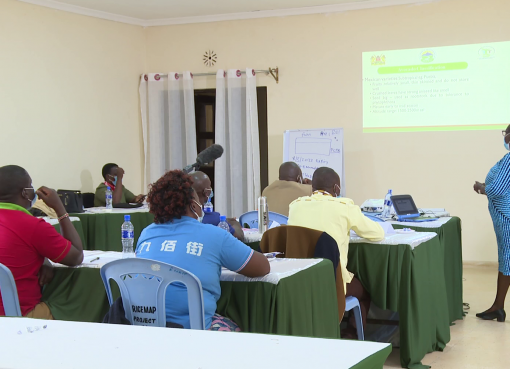Geothermal Development Company (GDC) has announced that drilling of third Paka Well in Baringo County has been successful following discovery of steam.
A total of three wells have been drilled for geothermal development at the Baringo-Silali geothermal project.
Managing Director and Chief Executive Officer Jared Othieno said in an interview with Kenya News Agency in Nakuru that the well which started to emit steam a week ago opens a new frontier of renewable energy in the country.
Engineer Othieno stated once completed, the Baringo-Silali geothermal project is expected to produce 300MW of power by 2030 spread over three geothermal areas – Korosi, Paka and Silali.
“The discovery has proved the commercial viability of the Paka geothermal field. It is also ushering Kenya into an age of vibrant geothermal energy.
The project will be critical in further lowering the cost of electricity in the country and drive the big four agenda,” said the Chief Executive Officer.
He said the latest success in striking steam had proved that Paka was no longer a prospect but a field, adding that drilling will now commence at Korosi, the block’s second prospect and later extend to Silali, the third prospect. Kenya’s other geothermal fields are in Olkaria and Menengai.
He observed that the national focus was currently on manufacturing, and the provision of affordable housing and health services and enhancing food security. The development of geothermal energy, he said, will plug in vital support.
“Geothermal energy will be critical, especially in bolstering the twin pillars of manufacturing and food security.
For manufacturing, we need affordable, reliable and clean energy. The sector will be attractive in a regime of friendly tariffs. And nothing promises a spectacular combination of affordability and reliability like the geothermal source,” said the Chief Executive Officer.
He said Kenya has heavily invested in geothermal energy as it targets 100 per cent transition to green energy by 2030 to address the climate change challenge adding that with a geothermal largesse potential of about 10,000MW, the geothermal resource will be a game changer in powering the manufacturing sector.
“It is through geothermal power that the government’s policy of subsidized power to bulk users will be sustained. GDC’s target is to produce more than 1,000MW in the next 10 years.” said Othieno.
He observed that besides electricity, geothermal energy provides direct heat to industrialists, a by-product of electricity in the form of steam coming from power plants at about 1500C which he said was very cheap, yet, highly sought-after.
“If efficiently harnessed, geothermal heat will deliver energy that will enable farmers and food processors to increase production and improve food security. The heat is also used in the industrial drying of grains, fish, vegetables, tea, and pyrethrum, milk pasteurization, brewing and heating greenhouses and fish farms. The geothermal fluid boosts tourist paradise in the form of medicinal spas.
In milk pasteurization, manufacturers can cut up to 70 per cent of their heating costs by using geothermal energy. Other studies show that when it is used to heat greenhouses, the cost of production drops by about 40 per cent,” stated the CEO.
He explained that harnessed heat from Menengai Crater Geothermal fields in Nakuru can be transported for about 10km through an elaborate reticulation of pipes and pumped into individual farms, private homes and industries.
“Geothermal heated greenhouses, aquaculture ponds, dairy plants and geothermal powered laundries within that radius can negotiate with GDC for facilitation. Farmers and homeowners who use electric powered systems will save up to 50 per cent by switching to a geothermal system.
“The smallest single unit of geothermal powered milk plant can process between 250,000 to 500,000 litres of milk daily. Bahati constituency which hosts Menengai crater is one of Nakuru’s best tomato producers. With adoption of this new system of energy, farmers will improve yields by more than 30 per cent,” affirmed the CEO
Engineer Othieno said GDC was supporting the rise of industrial parks along the geothermal belt that runs from Lake Magadi to Lake Turkana. It was also working on spots in Homa Hills and Mwananyamala in Kwale.
He explained that at 50 degrees centigrade, heated water is circulated around a greenhouse to control the humidity at night, early morning and during wet seasons of the year where humidity inside greenhouses rises above 85 per cent.
“Greenhouse heating cuts down on the use of fungicides by reducing humidity. A constant optimum temperature inside the greenhouse results in the enhanced growth rate of plants as well as quality. Profitability may go up by more than 30 per cent as well as increasing market share of the crops due to the use of green energy”, said Engineer Othieno
A feasibility study conducted by GDC recently indicated that a medium-sized milk processing plant using geothermal energy for milk processing resulted in energy cost reduction of up to 60 per cent.
“The hot water to the washer is mixed with cold one to the required temperature of the clothes to be washed. The electrical heating element in the dryer is replaced with a specially designed fan coil unit which uses geothermal heated water at about 80 degrees centigrade to ensure the clothes are dry.
With regard to fish rearing, aquatic ponds are heated to and maintained at 29 degrees centigrade for optimal fish metabolism leading to enhanced faster growth. Here, the geothermal heated water is mixed with cold water to attain the required temperature,” explained Engineer Othieno.
GDC Chief Executive stated that maintaining aquatic ponds at a constant temperature of 29 degrees centigrade decreases the maturity period of fish from six to four months for Tilapia hence profitability is increased by more than 40 per cent.
The geothermal energy will also come in handy in laundry systems. Heated water in the laundry can be used in the washers and dryers.
According to the Renewables Global Status 2018, Kenya tops in Africa with 700 megawatts (MW) of geothermal power, retaining its place compared to last year.
The US has the largest geothermal generating capacity with 2,500 megawatts followed by the Philippines (1,900 MW), Indonesia (1,800 MW), Turkey (1,100 MW), New Zealand (1000 MW), Mexico (900 MW), Italy (800 MW) and Iceland (750 MW).
Kenya beats technological heavyweight Japan which has been ranked tenth with an output of 500 MW.
The rest of the world shares 950 MW. Ethiopia is the only other African country with developed geothermal energy (7 MW).
Geothermal is widely considered a preferable, low-cost renewable energy source due to low emissions when compared to thermal sources.
It is also cheaper than thermal power when used as an alternative to mitigate depressed hydropower generation due to drought. Kenya has a target of 5 gigawatts (GW) geothermal capacity by the year 2030.
Green energy power plants under development in Kenya include the 300 MW Lake Turkana Wind Power Plant, which is the single largest wind power plant in Africa, the 70 MW Olkaria 1 and the 140 MW Ol Karia V.
By Anne Mwale





